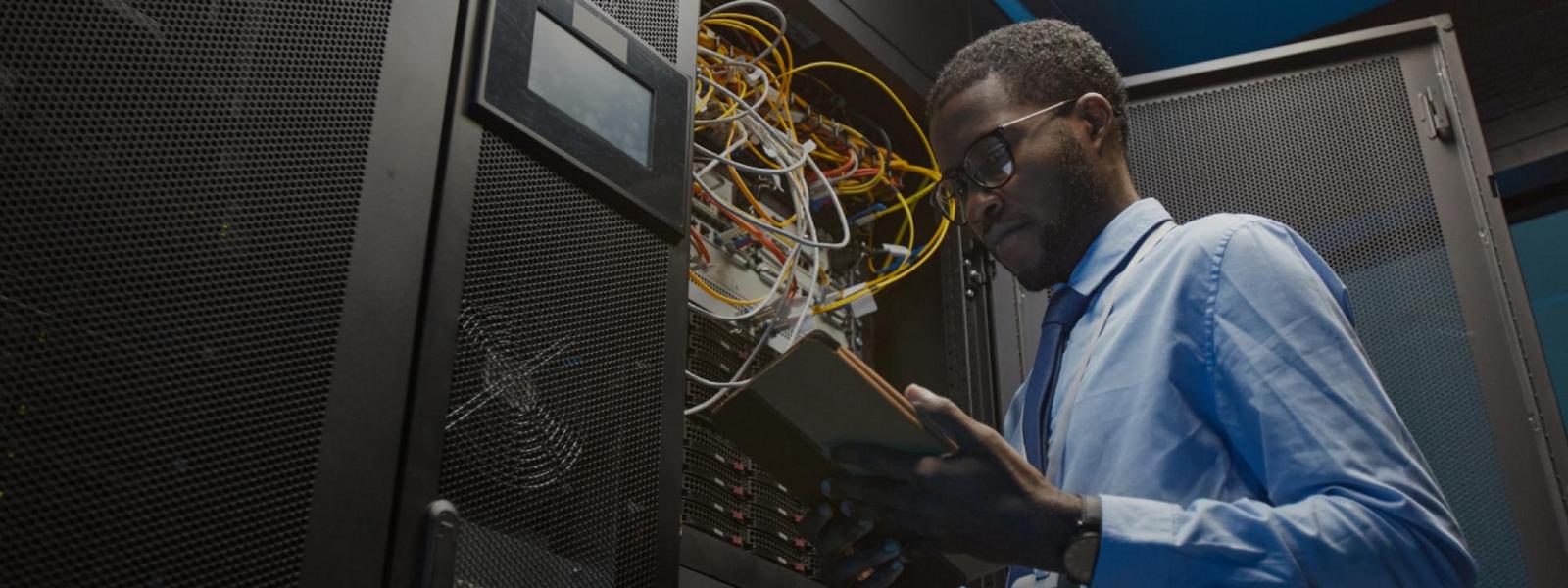Modern working means flexible working: nine out of ten employees want to work remotely. So there’s limited benefit to basing a network around a few large data centres. To reach remote offices and roaming colleagues, you need a network with a large footprint that provides access from every edge.
That setup raises questions about security. In 2021, 85% of organisations suffered some cyberattack, and the average data breach cost rose to $4.35 million. So it’s no surprise cybersecurity became a top priority for enterprises. Enter SASE, otherwise known as ZTE.
Secure Access Service Edge emerged as a response to the risks and rewards of the present moment. Taken as a whole, the acronym ‘SASE’ describes a new way of serving network users:
- ‘Secure Access’ is about giving them a route to the information they need while keeping the organisation safe from data breaches.
- ‘Service Edge’ means running services from sites near each user rather than backhauling traffic to a centralised data centre. As a result, everything gets faster and smoother for users.
No two SASE offerings are the same
While describing SASE as a cloud-based network is technically accurate, it’s only effective because it uses many physical points of presence (PoPs). This puts global network owners like us at an advantage.
As owners and architects of the most significant public and private networks, we have access to thousands of high-capacity network sites worldwide. And we’re actively improving those sites through our Super PoP strategy. (What’s the difference between a PoP and a Super PoP? One of our strategy managers says it’s like the difference between a phone and a smartphone. The leap forward is that dramatic.) The Super PoP strategy means we can introduce SASE and Virtual Network Functions to more business customers.
So choose your communications partner carefully. We’d say we have a particular advantage among ISPs because our infrastructure involves private networks, internet users and mobile endpoints. It even interconnects with Amazon, Microsoft, Google and other Software-as-a-Service companies. So we can carry traffic to cloud-based applications and back again without passing it to another network (more on that in a moment).
Deploying SASE over a widespread network with plenty of peering relationships is a profitable use of your IT budget. It balances speed, security and simplicity to set your business up for the future.
Three big benefits of fixed infrastructure:
1. Speed: We must bring up network peering again if we’re talking about speed. All told we have around 500 peering relationships. For example, we have direct peering connections with Microsoft in over 20 cities globally. And, over the last 12 months or so, we’ve doubled the number of direct links with the software giant and increased the capacity of our interconnections by 650%.
Because of these links, our traffic only takes one hop to reach Microsoft 365. A direct connection deals with the issues that could limit Microsoft 365 on other, less capable networks. Each peering connection comes with back-ups, so traffic handoff is faster, and teams keep working even when a line goes down. Businesspeople who use Microsoft 365 feel the difference as a measurable step change in speed and productivity.

2. Security: When users and devices are everywhere, security must also be everywhere. In the old way of working, businesses would forward remote user traffic to their data centres, inspect it, and send it back again. But the further traffic needs to travel, the longer its journey takes. So the traditional approach to verification becomes impractical when teams are spread out: no longer in a central headquarters but working from home.
Thankfully, SASE or ZTE or – as we like to call it – Secure Connected Enterprise has emerged as a more direct network strategy. Traffic’s inspected at points of presence near the users before being sent to its destination. Access to applications and data is more efficient. And, if you’re worried this efficiency might come at the expense of your data security, don’t be. Secure Connected Enterprise brings a range of network security services together, including:
- Software-Defined WAN or SD-WAN – a network with controls to steer traffic to trusted providers
- Firewall as a Service or FWaaS – a cloud service that inspects traffic and enforces security policies
- Zero-Trust Network Access – a solution that only lets verified users or devices access applications and checks identities every session
- Cloud Access Security Broker – a service that sits between users and cloud providers to make sure businesses are using the cloud in a safe way
- Secure Web Gateway – a solution that stops an organisation’s users from accessing unsafe websites
- Simplicity – because it’s the foundation for a whole range of solutions
3. Simplicity: Think about infrastructure first and software second, and you’ll end up with an IT estate that’s easier to manage. Buying software from an Over-The-Top provider might be straightforward at the moment, but it soon raises awkward questions about system integration.
We make sure our solutions work together. Take our voice connectivity systems and cybersecurity solutions. These services, which seem so different on the surface, have a typical architecture – an architecture founded on our infrastructure. What does that mean for IT leaders? More control. IT teams can set policies based on load conditions, network performance, or specific application or security requirements.
It’s only because of our network – and our Super PoP strategy – that we can offer a harmonised set of services covered by a single set of standards, which can be managed through a single portal. Our points of presence are a key strength and one we’re glad to share with customers.
The right partner gives you speed, security and simplicity
Almost everything we do in modern work – file sharing, record keeping, calling, messaging, emailing, analysing data, taking payments – relies on networking in big or small ways. And, as the demands on networks increase, businesses need to be prepared.
The proper infrastructure will empower remote working and, in turn, attract the right talent. Who do you think they’ll choose if an ambitious professional gets two job offers – one from a centralised, office-bound corporation and the other from a flexible, forward-looking enterprise?
– Andy Kivell
Head of Connectivity Portfolio, Vodafone Business
Expand your horizons with an agile, intelligent enterprise network
SD-WAN is an alternative and more dynamic approach to designing and deploying enterprise WAN solutions – providing greater network visibility and control. It aims to replace traditional branch routers with appliances that use virtualisation, application-level policies and network overlays to make several broadband internet links behave like a dedicated managed circuit.
Speak to Vodacom Business today to find the best network infrastructure solution for your business.


